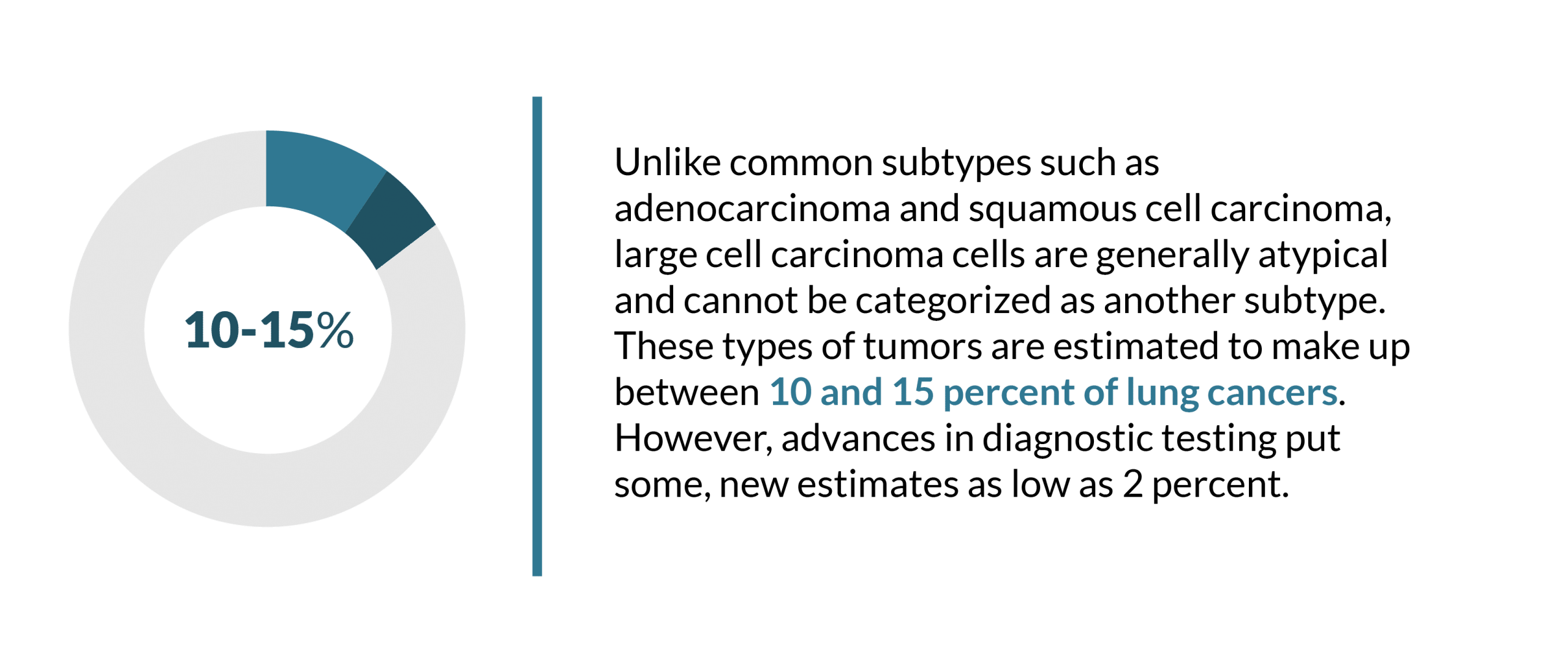What Are Lung Cancer Cell Types?
When making a diagnosis about the type of lung cancer, doctors look at the cell types present where the cancer began. Knowing your cancer cell types also informs your prognosis and helps to direct treatment.

Lung Cancer Cell Types
After an initial exam confirms the presence of tumors in the lung, patients undergo diagnostic tests to determine the type of lung cancer. To make a diagnosis on the specific type of cancer, cells from the primary tumor are collected from the body via biopsy and analyzed under a microscope. Different lung cancer cell types are usually found in different areas of the lungs and connecting airways.
Just as each person is unique, each case of cancer is unique to the individual. The term lung cancer simply refers to a group of distinct cancers, all of which began as mutated cells in the lungs. The types of cells found in the body not only allow doctors to make an accurate diagnosis but also direct the course of treatment. Oncologists approach treating rare lung lymphomas, sarcomas, and benign hamartomas, differently than small and non-small cell lung cancer, for example.
Some patients may develop cancer in their lungs as a result of the spread of cancerous cells around the body. When tumors shed cancer cells, they can travel to other organs via the circulatory or lymphatic systems. Even if these metastatic cancers begin to develop unchecked in the lungs it is not categorized as lung cancer.
The majority of lung cancers are divided into two major groups of cell types: small cell lung cancer (SCLC) and non-small cell lung cancer (NSCLC). About 80 percent of cases are diagnosed as the slower-spreading NSCLC. In nearly every case, SCLC is linked to a history of cigarette smoking.
Small Cell Lung Cancer (SCLC)
Small cell lung cancer is named for the way its cells appear beneath a microscope: small, round-to-spindle shaped. How a cell looks can vary depending on the expression of certain genes in cancer cells.
SCLCs make up between 10 percent and 15 percent of all lung cancers, and about 70 percent have reached advanced-stage cancer by the time of diagnosis. SCLC begins in the epithelial cells (i.e., lung cells responsible for microbial defense and other functions) where cigarette smoke is the most common cause of cellular damage leading to cancerous mutations.

Small cell carcinoma (sometimes called “oat cell cancer” due to the appearance of cells) is the most common type of SCLC. The second type of SCLC, combined small cell carcinoma, has features of SCLC as well as non-small cell features (like adenocarcinoma or squamous cell).
This type of lung cancer tends to increase in size and spread more rapidly. Treatments like chemotherapy and radiation generally focus on palliative options to reduce the harmful side effects of cancer.
Non-Small Cell Lung Cancer (NSCLC)
Non-small cell lung cancer is the most common form of the disease and cell types within this group tend to spread more slowly than SCLC. Occupational exposure to carcinogens, environmental pollution, and smoking can cause cellular mutations that lead to NSCLC.
The three main types of NSCLC (adenocarcinoma, large cell carcinoma, and squamous cell carcinoma) are named for the cell types, how each cancer behaves, and how cells respond to treatment.
- Adenocarcinoma: Tumors start growing in cells along the outer edges of the lungs and airways that normally secrete mucus. Adenocarcinoma cells tend to be discovered earlier than other lung cancers and are the most common among people who’ve never smoked.
- Large Cell Carcinoma: This type is also called undifferentiated carcinoma. These cells can start growing in any part of the lung and tend to spread faster than other subtypes.
- Squamous Cell Carcinoma: Cell mutations begin in the flat cells lining the inside of the lungs. Most squamous cell tumors affect the main airway near the middle of the lungs. Also called epidermoid carcinoma.
Other subtypes of NSCLC are less common. Under a microscope, cancer cells may not be fully developed or hard to identify due to the presence of multiple types of cells. Adenosquamous carcinomas and sarcomatoid carcinomas are scarce among lung cancer cell types and typically require other or more intense forms of treatment.
Rare Types of Lung Tumors
While the above lung cancer cell types make up the majority of diagnoses, other precancerous and cancerous cells may spread in the respiratory system. Mesotheliomas are a rare form of cancer but one of the most common consequences of asbestos exposure. Other rare lung tumor cell types include:
- Adenoid cystic carcinomas
- Lung hamartomas (benign)
- Lung lymphomas
- Lung sarcomas
- Salivary gland tumors
In the advanced stages of non-lung cancers, cells may metastasize (i.e., spread) to the lungs. For instance, breast cancer cells may penetrate lung tissues. The cancer, however, is still considered breast cancer. Cancers that spread to the lungs, but are not considered lung cancer, typically include cells from:
- Breast cancer
- Kidney cancer
- Pancreatic cancer
- Skin cancer


